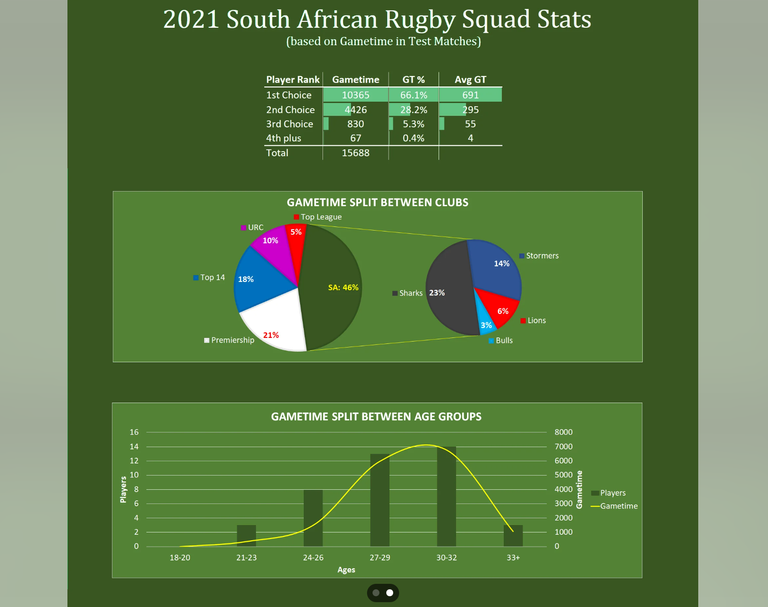Data Driven Battle Statistics Now Used In Rugby

There are many algorithms that can be used to predict the World Cup winners, but they are a general over view and don't take in the teams strategies over the 4 year period in between the tournaments, plus the squad depth of each team.
During this Rugby World Cup far more has been revealed into some of the thinking that is taking place behind the scenes. The back room staff is driven by statistics and it is this what drives the team selections.

Game time was the obvious stat used by teams, but this has now evolved into far deeper insights into every professional player.
We all know the Rugby World Cup is the ultimate test of any team due to the schedules with 7 games played over 7 weeks with the last 3 games being knockouts. Looking at the players statistics for time played is only the tip of the iceberg. Rassie Erasmus the South African coach has changed the sport by what he does and the way he thinks outside the box.
The backroom staff gather information on every single player in every single team knowing firstly how fresh they are due to time played. They then incorporate battle stats which is a new term for rugby. We know other sports like Formula One are driven by data and now we see rugby going up another level.
Battle stats are the stats that show the work of every player during a game and there is no hiding from this. Every positive action a player does whether it is a tackle, a line break, contesting a ball on the ground, winning a turnover, supporting another player or even slowing a move down. These are fed into the system and a time is given between all the battle statistics. This is how they are selecting the team each week by picking players that add more positives than others.
When South Africa started doing this a few years ago they used to have all the games with their players involved checked so they could find the most active players in those positions. In all the teams player positions from around the world with numbers 1-15 South African players lead with 10 out of 15.
The smallest player funny enough leads the way with a battle stat of 69 seconds. The team will not select players who are not busy and need the players who can change a game through their work rates. You may find a very talented player, but is overlooked due to a lack of involvement throughout the 80 minutes. This is what makes a team and drives the players by knowing what the team selectors are looking at.
When I played rugby many years ago it was tiring to play 80 minutes and you do have periods of play that slow down where you can take things slightly easier. Today you cannot do that as you are expected to empty the tank and be replaced by another like minded player. If you select a team that has higher battle statistics than your opponents then the chances are you should win.
Last night South Africa had a disappointing game even though they won, but the players just looked flat after their narrow win last week. Not surprisingly players were replaced immediately after they had committed errors. In the past we normally see substitutes appearing at around the 60 minute mark, but last night the first one was in the 28th minute. This is all driven through the performance statistics with a standard being set and players having to meet that standard.
This way of thinking is taking the sport to another level and why certain teams are more successful than others. Very few have been thinking this way and now going forward this is how they will all be trying to execute their development plans. If you haven't got the depth of players then the team will struggle to perform over a long tournament like the World Cup. A one off game is different, but over 7 weeks you will be found out.
I have seen that all these teams come into the World Cup by working very hard and then in the end, the team that works the hardest and the team that looks the most is the team.